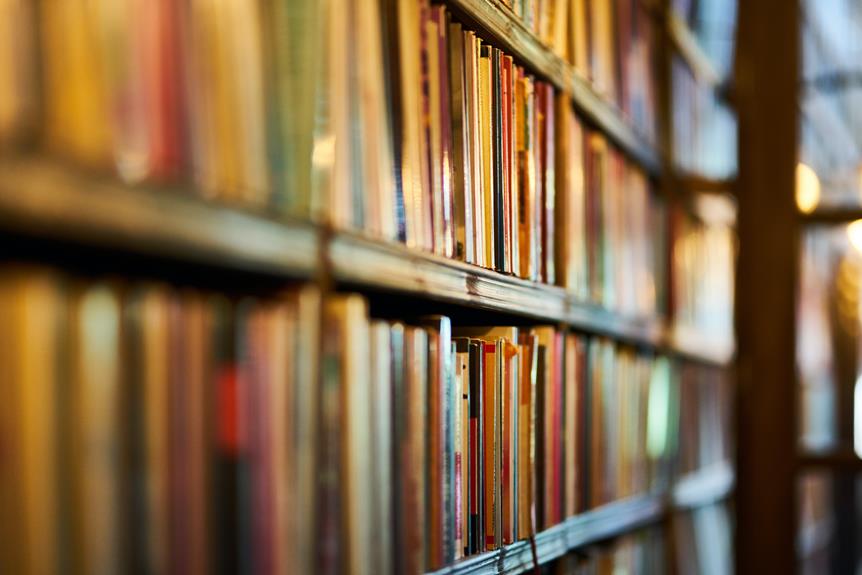Welcome to an exploration of the vibrant history and culture of Joypurhat District, a region nestled in the northern part of Bangladesh. With its roots tracing back to the Pala Empire and Sena dynasty, Joypurhat is steeped in a rich heritage that has shaped its identity over the centuries. From the bustling town of Lalbazar Thana to the picturesque rivers that adorn its landscapes, this district offers a captivating blend of natural beauty and cultural tapestry. With a diverse demographic and notable landmarks, Joypurhat promises to unveil a world of fascinating stories and traditions. So, join us on this journey of discovery as we uncover the captivating world of Joypurhat and the treasures it holds.
Historical Background
The historical background of Joypurhat District provides a fascinating glimpse into its ancient roots, tracing back to the era of the Pala Empire and Sena dynasty. During this time, the district was under the influence of the Pala Empire, which had a significant impact on the region's culture and development. The town, previously known as Baghabarihat and later as Gopendraganjahat, evolved over the centuries, with the establishment of Lalbazar Thana and the presence of Neelkuthi establishments in the area. However, the history of Joypurhat remained unclear until the 16th and 17th centuries. Lalbazar Thana served as a center for travel, commerce, and trade, and it was during this period that the railway line was established in 1884, leading to the renaming of Baghabari railway station to Joypurhat railway station. Some believe that Joypurhat was named after King JoyPal of the Pala Empire.
Geography and Climate
What are the geographical features and climate of Joypurhat District in Bangladesh? Joypurhat District is located in the northern part of Bangladesh, in the Rajshahi Division. The district is blessed with several rivers, including the Tulshiganga River, Small Jamuna River, Chiri River, Haraboti River, and Sree River. These rivers not only add to the natural beauty of the district but also serve as important water sources for irrigation and other purposes. Joypurhat experiences a tropical climate, characterized by relatively high temperatures and distinct wet and dry seasons. The average annual temperature in the district is 25.4°C, with August being the warmest month at 28.9°C and January being the coldest month at 18°C. The district receives an average annual rainfall of 1738mm, with the highest precipitation occurring in July and the driest month being December.
Demographics
With a population of 956,430 according to the 2022 Census, Joypurhat District in Bangladesh showcases a diverse demographic makeup and a range of cultural and religious identities. The district has experienced steady population growth over the years, reflecting the overall growth of the country. The population is distributed between urban and rural areas, with 23.4% residing in urban areas. The population density is relatively high, with 945 people per square kilometer. In terms of religion distribution, the majority of the population identifies as Muslims, comprising 89.66% of the total population. Hindus make up 8.83% of the population, while Christians account for 0.53%. This religious diversity contributes to the vibrant cultural fabric of Joypurhat District.
Arts and Culture
Joypurhat District in Bangladesh boasts a vibrant arts and culture scene, deeply rooted in its rich folk traditions and the hosting of various festivals and events. The district is known for its diverse range of festivals and traditions, including keerton, jaree, palagaan, kabigaan, baul, murshidee, lokgeeti, bhaoyaiya, and jattra. These festivals showcase the cultural diversity and artistic expressions of the local communities. Additionally, numerous cultural organizations have been established in Joypurhat district and its sub-districts since 1971, promoting and preserving the region's cultural heritage. The district also has a vibrant drama circle and celebrates arts and sculptures, particularly in places like Jamalganj, which is home to the UNESCO-certified world heritage site Pahar Pur (Sompur Bihar). Joypurhat's arts and culture scene is a testament to the district's rich history and the creativity of its people.
Points of Interest
The diverse cultural heritage of Joypurhat District is complemented by its numerous points of interest, which showcase the district's rich history, natural beauty, and artistic expressions. These points of interest offer visitors and locals alike a chance to immerse themselves in the local culture and experience the unique offerings of Joypurhat. Here are four notable attractions that shouldn't be missed:
- Local Cuisine and Culinary Traditions: Joypurhat is renowned for its delicious local cuisine, which includes dishes like Harivanga, a popular sweet treat. Visitors can explore the vibrant street food scene and savor the flavors of traditional Joypurhat dishes.
- Traditional Handicrafts and Artisanal Products: The district is known for its skilled artisans who produce a variety of traditional handicrafts, such as pottery, woodwork, and textile weaving. Visitors can witness the craftsmanship firsthand and even purchase unique, handmade souvenirs.
- UNESCO Certified World Heritage Site: Joypurhat is home to the UNESCO certified world heritage site Pahar Pur (Sompur Bihar). This ancient Buddhist monastery is a testament to the rich history and architectural prowess of the region.
- Natural Beauty: Joypurhat boasts stunning natural landscapes, including rivers, hills, and forests. Visitors can explore the scenic beauty of the district through activities like hiking, boating, and picnicking.
These points of interest provide a glimpse into the vibrant history, culture, and natural beauty of Joypurhat District, making it a must-visit destination for those seeking an immersive and enriching experience.
Administration
The administrative structure of Joypurhat District is integral to the efficient functioning and governance of the region. District governance is overseen by the Deputy Commissioner (DC) of Joypurhat, currently Mohammad Yasin. The district is divided into five municipalities, each with its own local government. Joypurhat District is further divided into five sub-districts (upazilas) – Joypurhat, Akkelpur, Kalai, Khetlal, and Panchbibi. To better understand the administrative structure, the following table provides a visual representation:
| Municipality | Sub-district (Upazila) |
|---|---|
| Municipality 1 | Joypurhat |
| Municipality 2 | Akkelpur |
| Municipality 3 | Kalai |
| Municipality 4 | Khetlal |
| Municipality 5 | Panchbibi |
This structure ensures that local government operates efficiently and effectively, with decision-making and governance processes streamlined for the benefit of the residents of Joypurhat District.
Railway Infrastructure
With the administrative structure and governance of Joypurhat District established, an examination of the region's railway infrastructure reveals its significance in connecting the district to the rest of Bangladesh and facilitating transportation and trade. The development of railways in Joypurhat has played a crucial role in the economic growth and development of the district. Here are four key points highlighting the importance of railway connectivity:
- Improved Accessibility: The railway network in Joypurhat has enhanced accessibility, allowing people and goods to move more efficiently within the district and to other parts of the country.
- Boost to Trade and Economy: The railway connectivity has provided a major boost to trade and commerce in Joypurhat, enabling the transportation of agricultural products, coal, cement, and other goods to different markets.
- Transportation of Passengers: The railway infrastructure has also facilitated smooth transportation of passengers, connecting Joypurhat residents with other cities and towns, and providing them with affordable and convenient travel options.
- Regional Integration: The railway network has contributed to the regional integration of Joypurhat, promoting social and economic interaction between different districts and enhancing the overall connectivity of Bangladesh.
The continuous development and maintenance of railway infrastructure in Joypurhat remain critical for the district's growth and prosperity.
Education
Education in Joypurhat District plays a pivotal role in shaping the intellectual development and future prospects of its residents. The district is home to a diverse range of educational institutions, including 27 colleges and notable secondary schools such as R.B. Govt. High School, Haripur High School, and Joypurhat Government Girls High School. Joypurhat Girls Cadet College, a military high school and college for girls, is also located in the district. The presence of these educational institutions not only provides access to quality education but also contributes to the overall development of the district. Education has a significant impact on the socio-economic growth of Joypurhat, as it equips individuals with the knowledge and skills necessary to participate in various sectors of the economy. Furthermore, education fosters critical thinking, creativity, and problem-solving abilities, which are essential for the progress of any community. Therefore, investing in education is crucial for the long-term development and prosperity of Joypurhat District.
Frequently Asked Questions
What Are the Main Industries and Agricultural Products in Joypurhat District?
The main industries in Joypurhat district encompass a diverse range of sectors. Agriculture plays a crucial role, with the district known for its production of agricultural products such as bananas, paddy, rice, wheat, and potatoes. Additionally, Joypurhat is renowned for its coal and cement production, which contribute significantly to the local economy. The district's rich cultural heritage and vibrant history are intertwined with these industries, creating a unique tapestry of livelihood and culture in Joypurhat.
How Many Municipalities Are There in Joypurhat District and What Are Their Names?
There are five municipalities in Joypurhat district. They are Joypurhat Municipality, Akkelpur Municipality, Kalai Municipality, Khetlal Municipality, and Panchbibi Municipality. Each municipality has its own administrative structure and plays a vital role in the development and governance of the district. These municipalities contribute to the socio-economic growth of the region and provide essential services to the residents. Their presence reflects the urbanization and progress of Joypurhat district.
Who Is the Current Member of Parliament for Joypurhat District-1?
The current member of parliament for Joypurhat District-1 is yet to be determined as of the time of this writing. Joypurhat District is known for its vibrant history and culture, as well as its main industries and products. The district is renowned for its agricultural products, coal, cement, and various sweets, such as Harivanga. It is also home to notable educational institutions, including Joypurhat Government College and Joypurhat Girls Cadet College.
What Is the Significance of the UNESCO Certified World Heritage Site Pahar Pur (Sompur Bihar) in Joypurhat District?
The UNESCO certified world heritage site, Pahar Pur (Sompur Bihar), holds great significance in Joypurhat District. It is a testament to the rich cultural and architectural heritage of the region. The site showcases the remains of a Buddhist monastery complex dating back to the 8th century. Pahar Pur is not only a historical site but also a symbol of religious and artistic excellence. Additionally, Joypurhat District is known for its vibrant cultural festivals, where locals celebrate traditions such as keerton, jaree, palagaan, kabigaan, baul, and more.
Can You Provide More Information About the Cultural Festivals Celebrated in Joypurhat District?
Cultural festivals in Joypurhat district are an integral part of its vibrant heritage. Festivals like keerton, jaree, palagaan, kabigaan, baul, murshidee, lokgeeti, bhaoyaiya, and jattra showcase the rich folk culture of the region. These festivals bring the community together and celebrate the diverse artistic expressions of the people. They provide a platform for local artists to showcase their talents and preserve the cultural traditions of Joypurhat. The district's cultural festivals are a testament to the deep-rooted history and cultural significance of Joypurhat.





